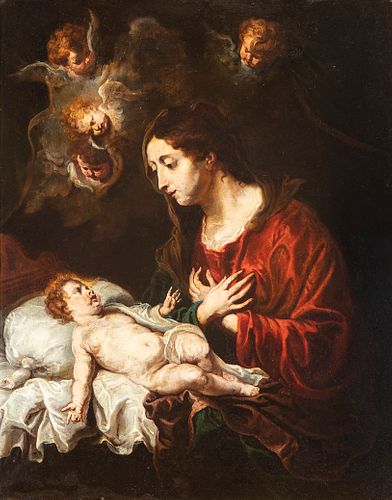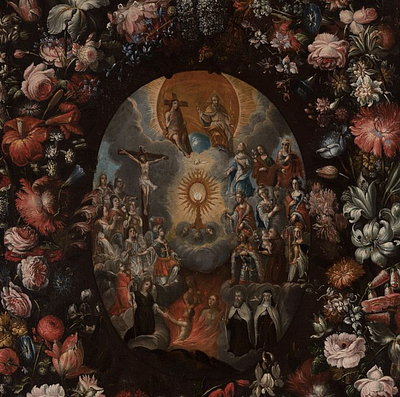Flemish school of the second half of the seventeenth century. Following models of ANTON VAN DYCK (Antwerp, 1599-London, 1641). "Virgin adoring Child".
Lot 126
About Seller
Setdart Auction House
Carrer Aragó 346
Barcelona
Spain
Setdart Subastas was born in 2004 and is currently the first online art auction in Spain with solidity, prestige and reliability guaranteed by our more than 60,000 users. Setdart has a young, dynamic and enterprising team ready to successfully manage the purchase and sale of art works through custom...Read more
Estimate:
EUR€5,000 - EUR€6,000
$5,376.34 - $6,451.61
Absentee vs Live bid
Two ways to bid:
- Leave a max absentee bid and the platform will bid on your behalf up to your maximum bid during the live auction.
- Bid live during the auction and your bids will be submitted real-time to the auctioneer.
Bid Increments
| Price | Bid Increment |
|---|---|
| EUR€0 | EUR€10 |
| EUR€200 | EUR€25 |
| EUR€500 | EUR€50 |
| EUR€1,000 | EUR€100 |
| EUR€3,000 | EUR€200 |
| EUR€5,000 | EUR€500 |
| EUR€10,000 | EUR€1,000 |
| EUR€20,000 | EUR€2,000 |
| EUR€50,000 | EUR€5,000 |
About Auction
By Setdart Auction House
Jul 14, 2021
Set Reminder
2021-07-14 06:30:00
2021-07-14 06:30:00
America/New_York
Bidsquare
Bidsquare : OLD MASTERS
https://www.bidsquare.com/auctions/setdart-auction-house/old-masters-7202
Setdart Auction House sofia@setdart.com
Setdart Auction House sofia@setdart.com
- Lot Description
Flemish school of the second half of the seventeenth century. Following models of ANTON VAN DYCK (Antwerp, 1599-London, 1641). "Virgin adoring Child". Oil on copper. Size: 50 x 40 cm; 75 x 64 cm (frame). The formal characteristics of the present copper allow to place it close to Anton van Dyck, key painter of the Flemish Baroque and one of the most important portraitists of the whole 17th century. Anton Van Dyck began his training with Van Balen, a Romanist painter, in 1609. In 1615-16 he worked with Jordaens, and between 1617 and 1620 with Rubens, who said that he was his best pupil. In 1620 he visited England for the first time, in the service of James I, when he was only twenty-one years old. In London he enjoyed greater freedom and left aside religious painting to devote himself fully to portraiture. Between 1621 and 1627 he completed his training with a trip to Italy, being particularly impressed by Bolognese painting and the works of Titian. It was in Italy where he achieved his mature, refined and elegant style, as well as configuring his type of portrait, which became a model for Western painting. In Italy his fame as a portraitist was also established, and he enjoyed immediate success wherever he worked, painting portraits of the most important noble families of Italy, as well as the Pope and various members of the Roman Curia. In 1629 he was again in London, this time working for King Charles I, who admired Titian's work and saw in Van Dyck his heir. Thus, he dismissed all his painters, having found in Van Dyck the court painter he had wanted for years. In 1640, on the death of Rubens, the painter returned to Antwerp to finish the works he had left unfinished. The following year he moved to Paris, where he painted the wedding portrait of King William II and Princess Mary. That same year he returned hastily to London for health reasons, dying shortly thereafter at his home in the English capital. Anton Van Dyck is represented in major museums around the world, such as the Louvre, the Prado, the Kunsthistorisches in Vienna, the National Gallery and the British Museum in London, the Hermitage in St. Petersburg and the Metropolitan in New York.
- Shipping Info
-
In-house shipping available. Please inquire at admin@setdart.com.
-
- Buyer's Premium



 EUR
EUR CAD
CAD AUD
AUD GBP
GBP MXN
MXN HKD
HKD CNY
CNY MYR
MYR SEK
SEK SGD
SGD CHF
CHF THB
THB













